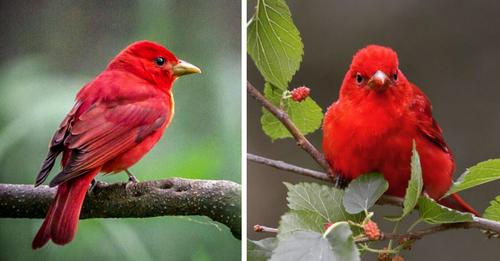The summer tanager is covered in rosy red to orange plumage from head to tail, alongside their special tune. These birds are apparently one of the most striking birds in North America.
The male adult Summer Tanagers are completely radiant red; the immature males are dull yellow-olive with smudged patches of red. Females are variable in shading, going from pale dull yellow to more lighter orange.
The summer tanager is the only completely red bird in North America, and it is a sight to behold against the green leaves of the woods. They breed once every year, and each summer they raise one brood.
They keep one mate all through each reproducing season, but not really in successive seasons, which means they are sequentially monogamous.
The summer tanager or the Piranga rubra is a medium-sized American songbird, formerly in the Thraupidae tanager family. This bird and different members of its genus are now arraigned in the cardinal family, Cardinalidae.
The summer tanager likes to reside in regions of the open woods, particularly regions harboring oak trees. These birds eat honey bees and wasps specifically, but they can also feast on different insects and eat berries occasionally.
Summer Tanagers stay fairly high in the forest shelters. There, they stand by and afterward sally out to catch insects flying in midair. They can also move gradually along branches of trees to gather food.
Meet the Summer Tanager
The male summer tanagers are radiant rose or orange-red all through the year and this specie is 6.7 inches long. They are differentiated from the scarlet tanager as a result of their plumage, which is paler.
In addition and in light of the fact that the Summer tanager’s wings are not black but red.
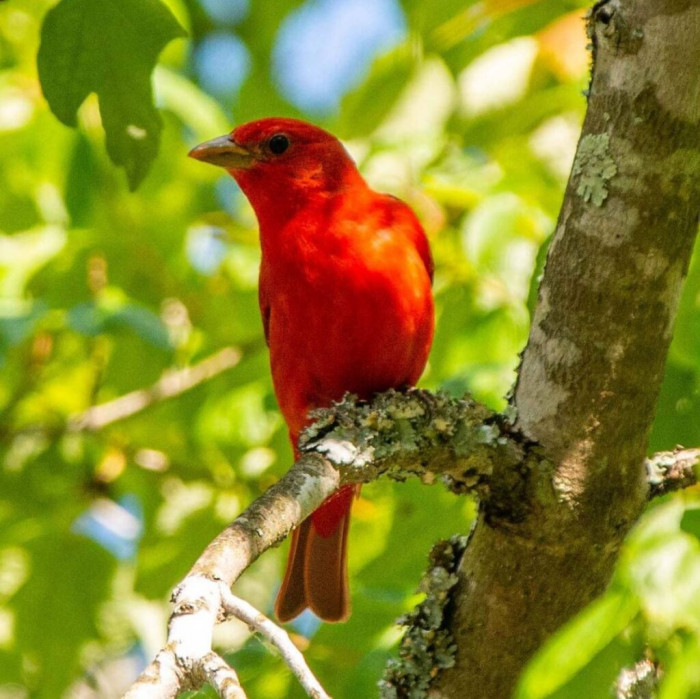
Isn’t she a beauty?
Juvenile males will generally look like females as they are both radiant yellow-green—more yellowish on the head and underparts and somewhat greener on the wings and back.
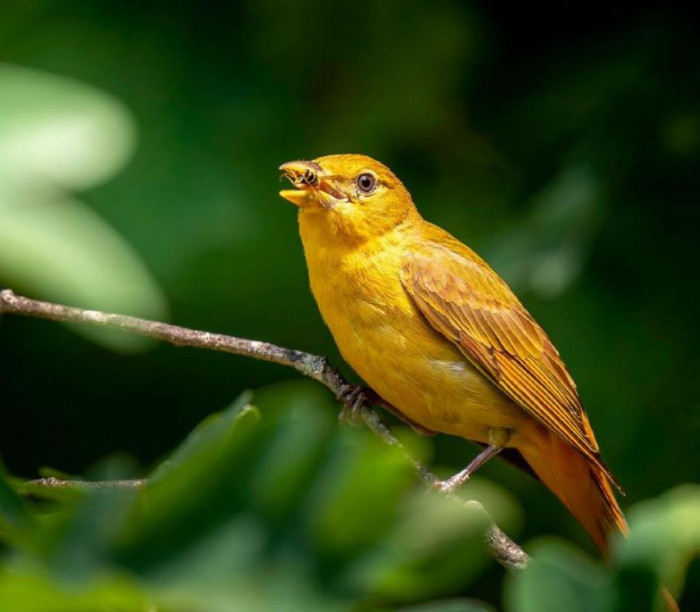
Look at those colors…
In general, females will be more olive above and orange-yellow underneath. Their wings and tail have an olive-brown color, and for certain females, they develop male pigmentation as they grow older.
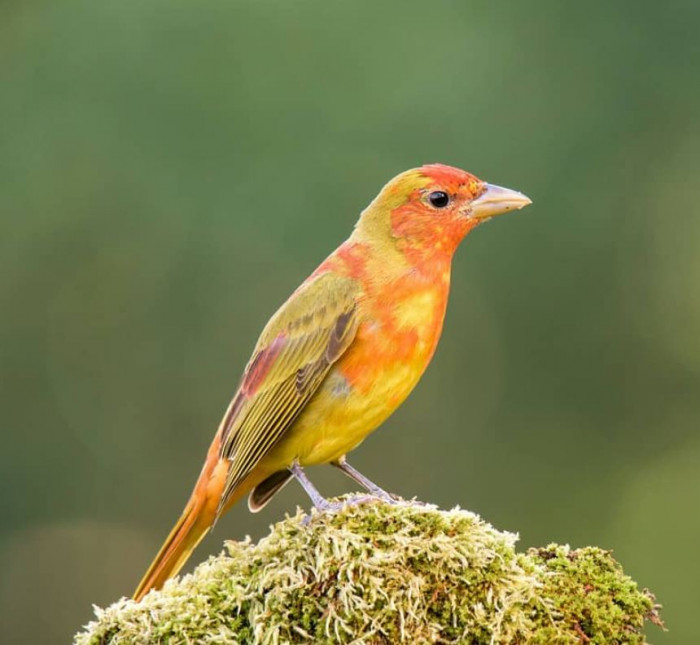
The striking bird has huge, thick bills that are blunt-tipped.
The male summer tanager has a sweet, whistling tune like that of an American Robin; both genders give an unmistakable pit-ti-tuck call note.
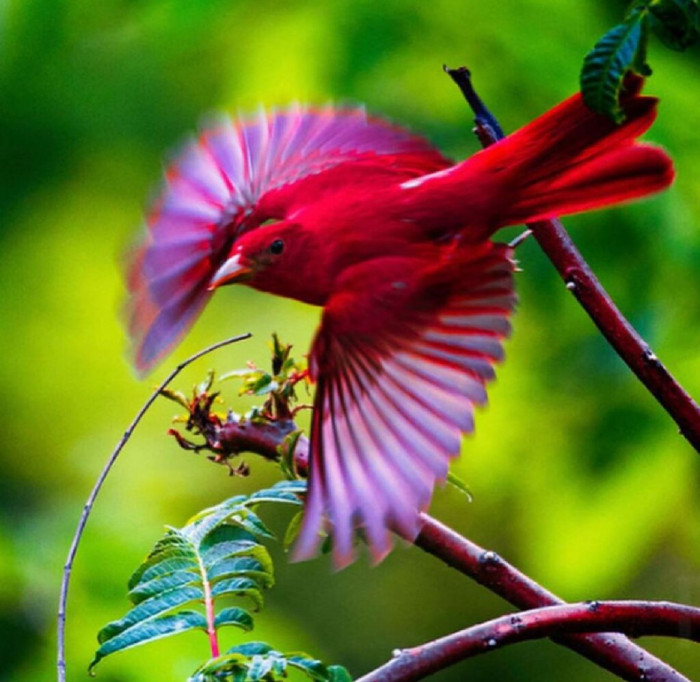
Let’s build a nest!
Whenever they have shown up in their breeding places in spring, Summer Tanagers ordinarily construct a nest on a horizontal branch somewhere between 2.5 to 10.5 meters above the ground. The bird’s nest is exclusively built by the female from herbaceous vegetation lined with grass, and in this nest 3 to 4 eggs are laid.
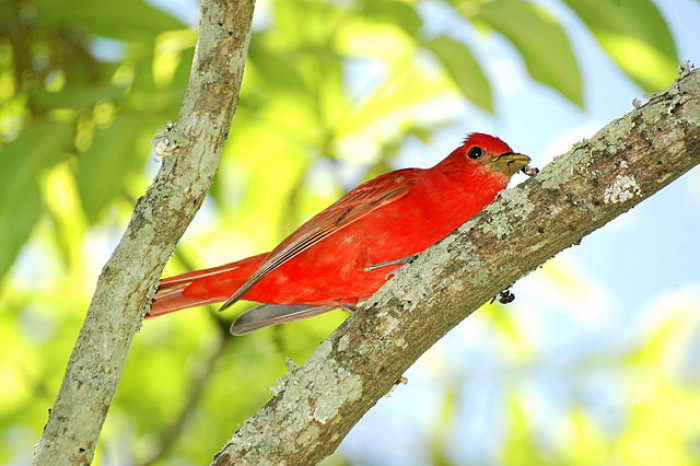
Sightseeing time…
Again, incubation is done exclusively by the female and it lasts between 12 to 13 days. The male, contingent on his inclination, might take care of the female during this time or he may care for his feathers.
Notwithstanding, when the chicks are hatched, the male moves ahead in full speed to aid the female in feeding and also watches out for their needs. The chicks leave their home after 8 to 10 weeks.
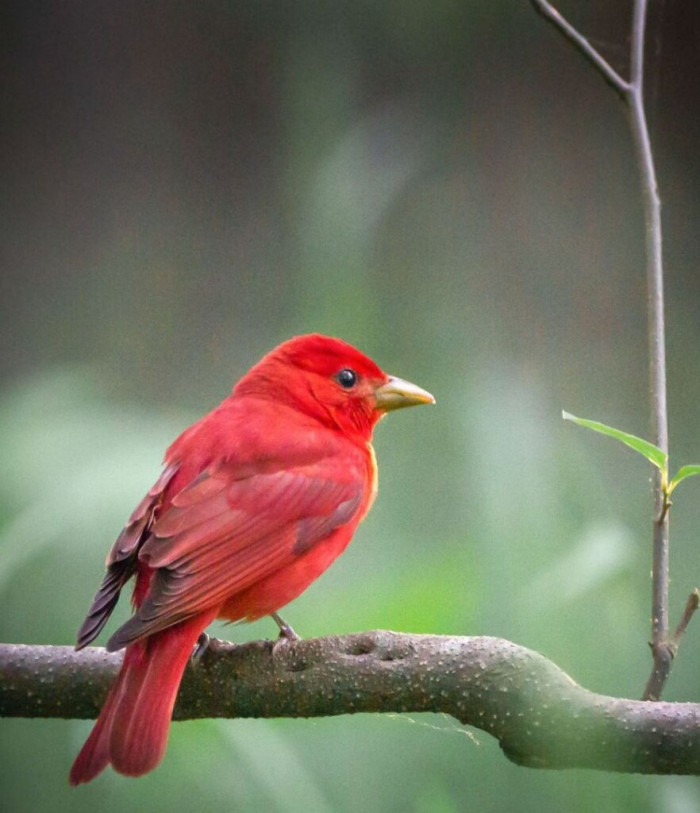
Don’t I look gorgeous?
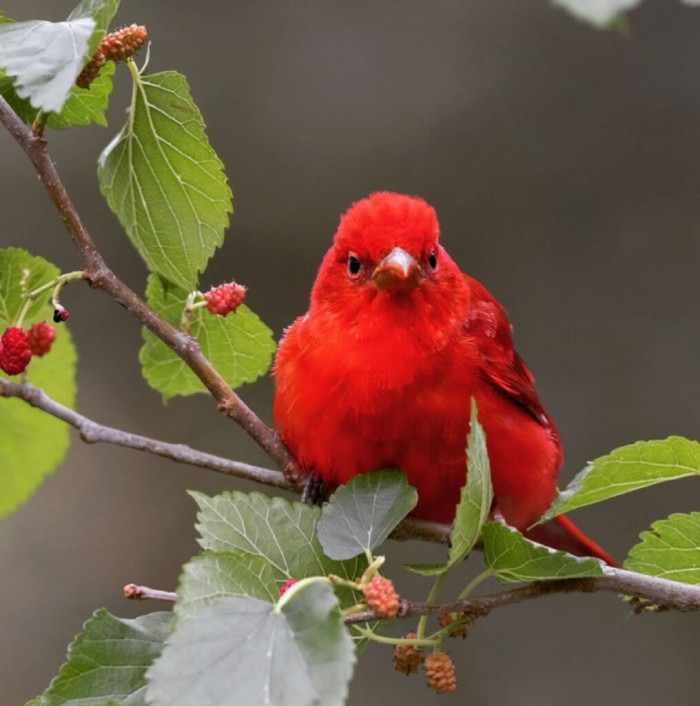
Have a look…
Watch and listen to the summer tanager below:
In the southern and eastern United States, the region south of southern Pennsylvania and northern Illinois are where these species of birds can be found. In the winter, they relocate to northern South America and Mexico.
This species has an incredibly enormous range. Hence, they don’t move toward the Vulnerable threshold under the IUCN range size criterion.
Kindly comment and share this video with all your loved ones who adore birds. Sharing is caring!
Please like and share.
